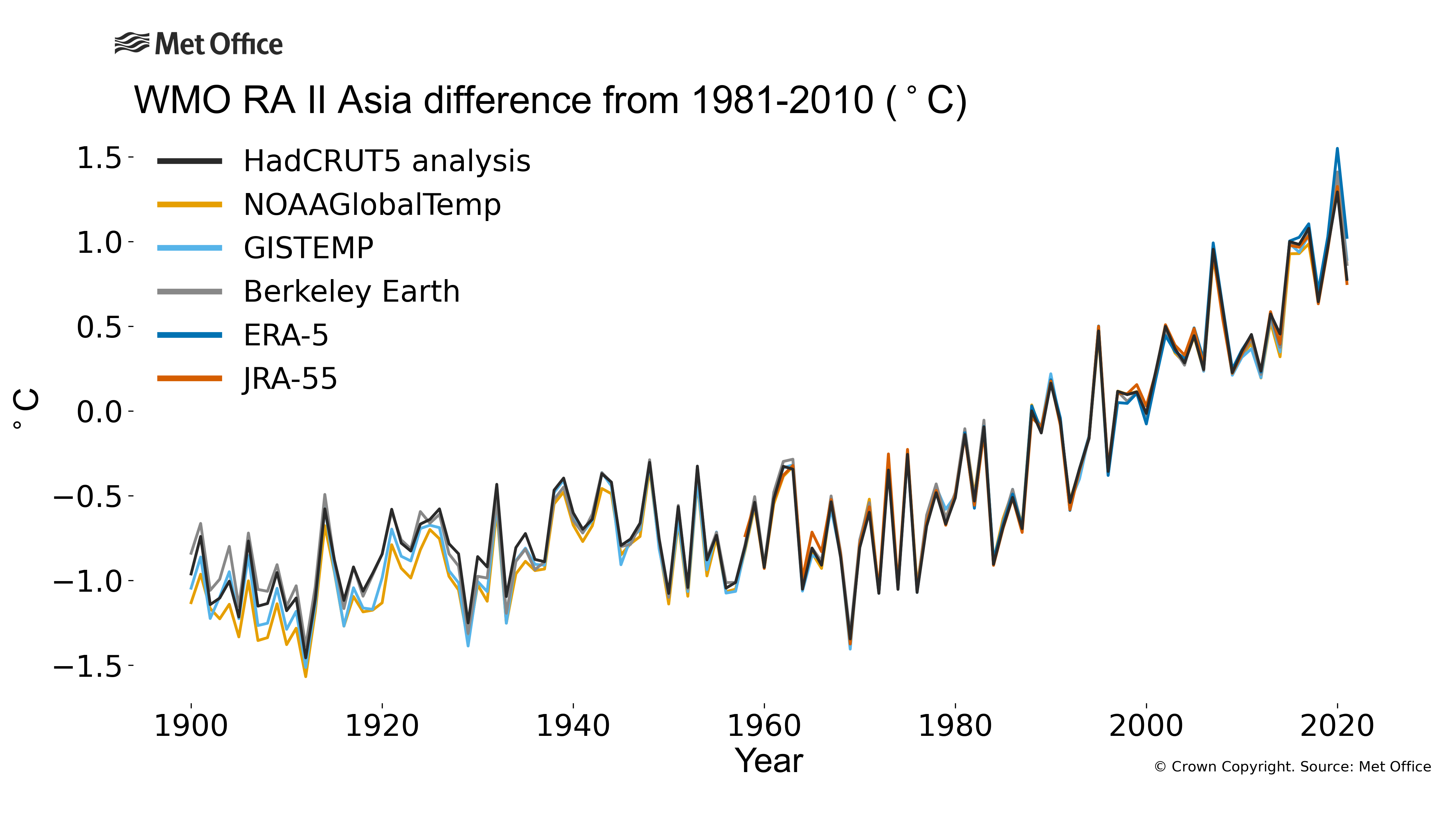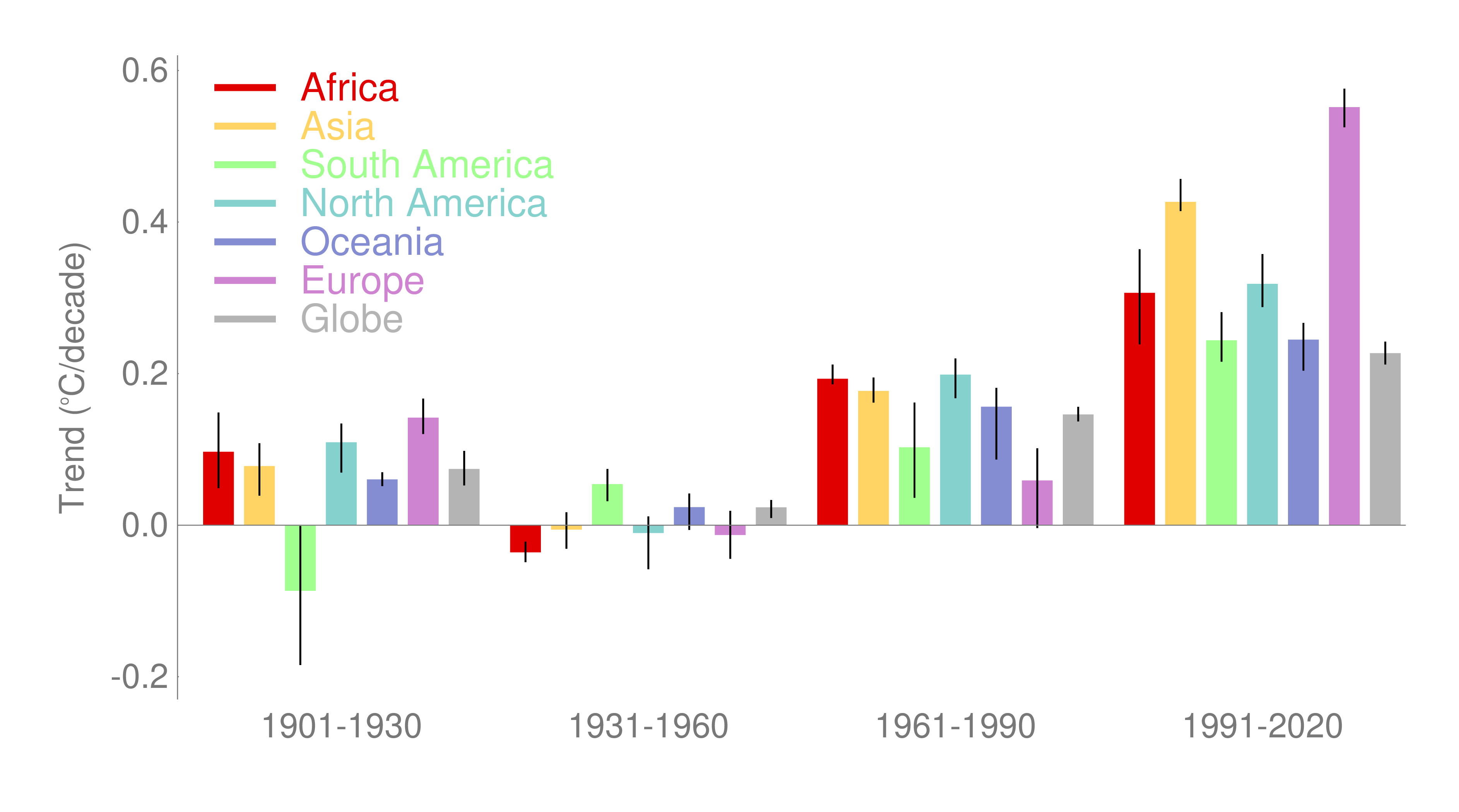Temperature change in WMO RA II - Asia
The temperature anomaly for 2021 was between 0.75 and 1.02 °c above the 1981-2010 average depending on the data set considered. the mean of the 6 data sets is 0.86 °c. 2021 was between the 5th and 7th warmest year on record depending on the data set considered (of 6 datasets).
The temperature anomaly relative to 1961-1990 for 2021 was between 1.33 and 1.47 °c above the 1961-1990 average depending on the data set considered. the mean of the 5 data sets is 1.41 °c. . Note that the range and mean of anomalies relative to the two
different baselines are based on different sets of data as anomalies relative to 1961-1990 cannot be computed for ERA5 which starts in 1979.
This can lead to apparent inconsistencies.
In WMO RA-II there is generally good agreement between the data sets back to 1900, although the agreement
improves over time.
WMO RA-II is the second fastest warming of the WMO RAs in the past 30 years, warming at around twice the global
average rate.
pdf version of time series.
Find out more about
temperature change in wmo ra ii - asia

The plot shows annual average temperature anomalies (relative to 1981-2010) for WMO RA I - Asia. Data are from six different data sets: HadCRUT5, NOAAGlobalTemp, GISTEMP, Berkeley Earth, ERA5 and JRA55.
The plot shows annual average temperature anomalies (relative to 1981-2010) for WMO RA I - Asia. Data are from six different data sets: HadCRUT5, NOAAGlobalTemp, GISTEMP, Berkeley Earth, ERA5 and JRA55.

The plot shows the trends for four thirty-year periods as indicated on the x-axis. The coloured bars are the average
trend calculated over each period for each of six data sets: HadCRUT5, NOAAGlobalTemp, GISTEMP, Berkeley Earth, ERA5 and JRA55.
The black vertical line indicates the range of the six estimates.
The plot shows the trends for four thirty-year periods as indicated on the x-axis. The coloured bars are the average
trend calculated over each period for each of six data sets: HadCRUT5, NOAAGlobalTemp, GISTEMP, Berkeley Earth, ERA5 and JRA55.
The black vertical line indicates the range of the six estimates.

